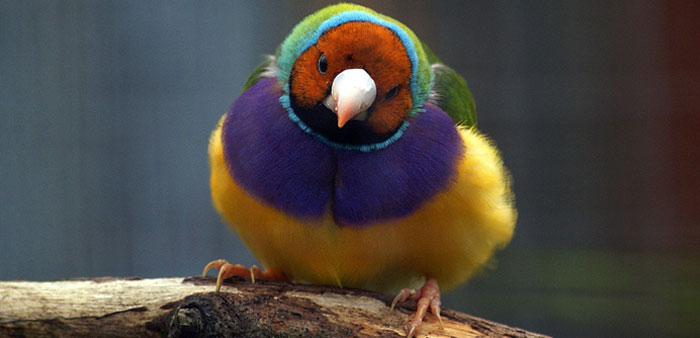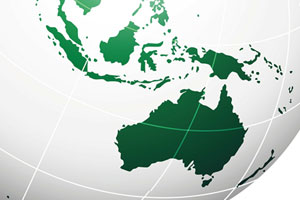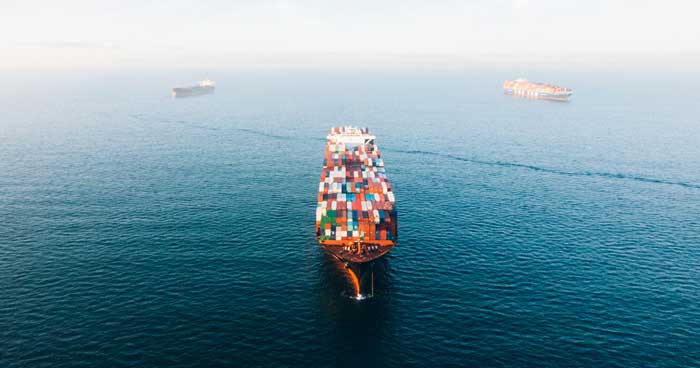
Have we turned the corner?
Australia is made great strides in environmental biosecurity over the past year, but have we turned the corner yet?

Australia is made great strides in environmental biosecurity over the past year, but have we turned the corner yet?

The decision to create an office of environmental biosecurity protection is big step forward in protecting Australia’s environment from dangerous new invasive species.

Today’s announcement by federal agriculture minister David Littleproud to establish an office of environmental biosecurity will better prepare Australia to prevent and respond to new harmful pest, weed and disease invasions.

A new container levy announced in the federal government could change the face of environmental biosecurity in Australia, writes Carol Booth.

A ground-breaking review of Australia’s national biosecurity system has earned its authors one of this year’s Froggatt Awards.

A small levy on sea and air cargo could be used to develop a biosecurity fighting fund that puts a halt to the growing list of dangerous pests and diseases slipping into Australia.

A campaign to fix the country’s leaky environmental borders and keep dangerous new environmental pests and diseases out. Send your message to the Deputy Prime Minister today.

A review of Australia’s biosecurity arrangements has highlighted the need for much greater focus on protecting the natural environment from invasive species.

A five-year review could shake-up Australia’s biosecurity arrangements, finally putting environmental pests and diseases on a par with agricultural and human health threats.

Securing Australia’s agricultural industries from dangerous new invasive species has long been the top priority in our biosecurity systems, but when it comes to environmental risks we haven’t fared so well. Well, that’s starting to change.

Securing Australia’s agricultural industries from dangerous new invasive species has long been the top priority in our biosecurity systems, but when it comes to environmental risks we haven’t fared so well. Well, that’s starting to change.

Despite containing funds for fire ant eradication, the 2017 federal budget was a disappointing, missed opportunity for environmental biosecurity in Australia.

Contrast the government’s response to white spot in Logan River prawns to the indifference from authorities when a new environmental invader arrives.

Environmental invaders continue to slip into Australia, raising threat levels for our native plants and animals, but are governments finally waking up to the need for tougher environmental biosecurity?

Submitted: April 2019
A submission that responds to questions raised in the discussion paper and argues that the biosecurity levy charged on shipping imports proposed in the 2018 federal budget should proceed.

Australia is made great strides in environmental biosecurity over the past year, but have we turned the corner yet?

The decision to create an office of environmental biosecurity protection is big step forward in protecting Australia’s environment from dangerous new invasive species.

Today’s announcement by federal agriculture minister David Littleproud to establish an office of environmental biosecurity will better prepare Australia to prevent and respond to new harmful pest, weed and disease invasions.

A new container levy announced in the federal government could change the face of environmental biosecurity in Australia, writes Carol Booth.

A ground-breaking review of Australia’s national biosecurity system has earned its authors one of this year’s Froggatt Awards.

A small levy on sea and air cargo could be used to develop a biosecurity fighting fund that puts a halt to the growing list of dangerous pests and diseases slipping into Australia.

A campaign to fix the country’s leaky environmental borders and keep dangerous new environmental pests and diseases out. Send your message to the Deputy Prime Minister today.

A review of Australia’s biosecurity arrangements has highlighted the need for much greater focus on protecting the natural environment from invasive species.

A five-year review could shake-up Australia’s biosecurity arrangements, finally putting environmental pests and diseases on a par with agricultural and human health threats.

Securing Australia’s agricultural industries from dangerous new invasive species has long been the top priority in our biosecurity systems, but when it comes to environmental risks we haven’t fared so well. Well, that’s starting to change.

Securing Australia’s agricultural industries from dangerous new invasive species has long been the top priority in our biosecurity systems, but when it comes to environmental risks we haven’t fared so well. Well, that’s starting to change.

Despite containing funds for fire ant eradication, the 2017 federal budget was a disappointing, missed opportunity for environmental biosecurity in Australia.

Contrast the government’s response to white spot in Logan River prawns to the indifference from authorities when a new environmental invader arrives.

Environmental invaders continue to slip into Australia, raising threat levels for our native plants and animals, but are governments finally waking up to the need for tougher environmental biosecurity?

Submitted: April 2019
A submission that responds to questions raised in the discussion paper and argues that the biosecurity levy charged on shipping imports proposed in the 2018 federal budget should proceed.

Australia is made great strides in environmental biosecurity over the past year, but have we turned the corner yet?

The decision to create an office of environmental biosecurity protection is big step forward in protecting Australia’s environment from dangerous new invasive species.

Today’s announcement by federal agriculture minister David Littleproud to establish an office of environmental biosecurity will better prepare Australia to prevent and respond to new harmful pest, weed and disease invasions.

A new container levy announced in the federal government could change the face of environmental biosecurity in Australia, writes Carol Booth.

A ground-breaking review of Australia’s national biosecurity system has earned its authors one of this year’s Froggatt Awards.

A small levy on sea and air cargo could be used to develop a biosecurity fighting fund that puts a halt to the growing list of dangerous pests and diseases slipping into Australia.

A campaign to fix the country’s leaky environmental borders and keep dangerous new environmental pests and diseases out. Send your message to the Deputy Prime Minister today.

A review of Australia’s biosecurity arrangements has highlighted the need for much greater focus on protecting the natural environment from invasive species.

A five-year review could shake-up Australia’s biosecurity arrangements, finally putting environmental pests and diseases on a par with agricultural and human health threats.

Securing Australia’s agricultural industries from dangerous new invasive species has long been the top priority in our biosecurity systems, but when it comes to environmental risks we haven’t fared so well. Well, that’s starting to change.

Securing Australia’s agricultural industries from dangerous new invasive species has long been the top priority in our biosecurity systems, but when it comes to environmental risks we haven’t fared so well. Well, that’s starting to change.

Despite containing funds for fire ant eradication, the 2017 federal budget was a disappointing, missed opportunity for environmental biosecurity in Australia.

Contrast the government’s response to white spot in Logan River prawns to the indifference from authorities when a new environmental invader arrives.

Environmental invaders continue to slip into Australia, raising threat levels for our native plants and animals, but are governments finally waking up to the need for tougher environmental biosecurity?

Submitted: April 2019
A submission that responds to questions raised in the discussion paper and argues that the biosecurity levy charged on shipping imports proposed in the 2018 federal budget should proceed.
Get our blog the Feral Herald delivered to your inbox.

The Invasive Species Council was formed in 2002 to seek stronger laws, policies and programs to protect nature from harmful pests, weeds and diseases.
The Invasive Species Council acknowledges the Traditional Custodians throughout Australia and their connections to land and sea. We pay our respect to their Elders past and present and extend that respect to all Aboriginal and Torres Strait Islander peoples today.
Our protected areas are being trashed, trampled, choked and polluted by an onslaught of invaders. Invasive species are already the overwhelming driver of our animal extinction rate, and are expected to cause 75 of the next 100 extinctions.
But you can help to turn this around and create a wildlife revival in Australia.
From numbats to night parrots, a tax-deductible donation today can help defend our wildlife against the threat of invasive weeds, predators, and diseases.
As the only national advocacy environment group dedicated to stopping this mega threat, your gift will make a big difference.
A silent crisis is unfolding across Australia. Every year, billions of native animals are hunted and killed by cats and foxes. Fire ants continue to spread and threaten human health. And the deadly strain of bird flu looms on the horizon. Your donation today will be used to put the invasive species threat in the media, make invasive species a government priority, ensure governments take rapid action to protect nature and our remarkable native wildlife from invasives-led extinction, death and destruction.
If you are having trouble submitting a form, please read this guide.
Please fill out the following form and one of our team will be in contact to assist as soon as possible. Please make sure to include any helpful information, such as the device you were using (computer, tablet or mobile phone) and if known, your browser (Mozilla Firefox, Chrome, Safari etc)
"*" indicates required fields
Dear Project Team,
[YOUR PERSONALISED MESSAGE WILL APPEAR HERE.]
I support the amendment to the Kosciuszko National Park Wild Horse Heritage Management Plan to allow our incredible National Parks staff to use aerial shooting as one method to rapidly reduce feral horse numbers. I want to see feral horse numbers urgently reduced in order to save the national park and our native wildlife that live there.
The current approach is not solving the problem. Feral horse numbers have rapidly increased in Kosciuszko National Park to around 18,000, a 30% jump in just the past 2 years. With the population so high, thousands of feral horses need to be removed annually to reduce numbers and stop our National Park becoming a horse paddock. Aerial shooting, undertaken humanely and safely by professionals using standard protocols, is the only way this can happen.
The government’s own management plan for feral horses states that ‘if undertaken in accordance with best practice, aerial shooting can have the lowest negative animal welfare impacts of all lethal control methods’.
This humane and effective practice is already used across Australia to manage hundreds of thousands of feral animals like horses, deer, pigs, and goats.
Trapping and rehoming of feral horses has been used in Kosciuszko National Park for well over a decade but has consistently failed to reduce the population, has delayed meaningful action and is expensive. There are too many feral horses in the Alps and not enough demand for rehoming for it to be relied upon for the reduction of the population.
Fertility control as a management tool is only effective for a small, geographically isolated, and accessible population of feral horses where the management outcome sought is to maintain the population at its current size. It is not a viable option to reduce the large and growing feral horse population in the vast and rugged terrain of Kosciuszko National Park.
Feral horses are trashing and trampling our sensitive alpine ecosystems and streams, causing the decline and extinction of native animals. The federal government’s Threatened Species Scientific Committee has stated that feral horses ‘may be the crucial factor that causes final extinction’ for 12 alpine species.
I recognise the sad reality that urgent and humane measures are necessary to urgently remove the horses or they will destroy the Snowies and the native wildlife that call the mountains home. I support a healthy national park where native species like the Corroboree Frog and Mountain Pygmy Possum can thrive.
Dear Project Team,
[YOUR PERSONALISED MESSAGE WILL APPEAR HERE.]
I support the amendment to the Kosciuszko National Park Wild Horse Heritage Management Plan to allow our incredible National Parks staff to use aerial shooting as one method to rapidly reduce feral horse numbers. I want to see feral horse numbers urgently reduced in order to save the national park and our native wildlife that live there.
The current approach is not solving the problem. Feral horse numbers have rapidly increased in Kosciuszko National Park to around 18,000, a 30% jump in just the past 2 years. With the population so high, thousands of feral horses need to be removed annually to reduce numbers and stop our National Park becoming a horse paddock. Aerial shooting, undertaken humanely and safely by professionals using standard protocols, is the only way this can happen.
The government’s own management plan for feral horses states that ‘if undertaken in accordance with best practice, aerial shooting can have the lowest negative animal welfare impacts of all lethal control methods’.
This humane and effective practice is already used across Australia to manage hundreds of thousands of feral animals like horses, deer, pigs, and goats.
Trapping and rehoming of feral horses has been used in Kosciuszko National Park for well over a decade but has consistently failed to reduce the population, has delayed meaningful action and is expensive. There are too many feral horses in the Alps and not enough demand for rehoming for it to be relied upon for the reduction of the population.
Fertility control as a management tool is only effective for a small, geographically isolated, and accessible population of feral horses where the management outcome sought is to maintain the population at its current size. It is not a viable option to reduce the large and growing feral horse population in the vast and rugged terrain of Kosciuszko National Park.
Feral horses are trashing and trampling our sensitive alpine ecosystems and streams, causing the decline and extinction of native animals. The federal government’s Threatened Species Scientific Committee has stated that feral horses ‘may be the crucial factor that causes final extinction’ for 12 alpine species.
I recognise the sad reality that urgent and humane measures are necessary to urgently remove the horses or they will destroy the Snowies and the native wildlife that call the mountains home. I support a healthy national park where native species like the Corroboree Frog and Mountain Pygmy Possum can thrive.